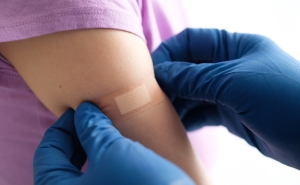
The CDC and FDA jointly established the Vaccine Adverse Events Reporting System, or VAERS, in 1990 as a way for people to report post-vaccination health issues. These could include allergic reactions, intestinal conditions, blood clots, or other problems that may or may not be related to a vaccine. While VAERS cannot determine whether an adverse event was caused by a vaccination, patterns in reporting may suggest a need for further evaluation to assess potential safety concerns.
Since the emergence of COVID-19 vaccines, however, the database has garnered more dubious notoriety. Anti-vaccination fringe groups have attempted to spin false stories using VAERS data, adding to misinformation about the safety of COVID-19 vaccinations.
Why VAERS Exists
VAERS serves as an early warning system for unforeseen problems with approved vaccinations that might be worth investigating scientifically. Often, these problems are so rare that they don’t appear until after clinical trials when a much larger population receives vaccinations.
VAERS is great at identifying signals of potential concern, says Kawsar Talaat, MD, an associate professor in International Health and co-director of clinical research for the Institute for Vaccine Safety. “Some of those signals end up panning out as true safety issues, and some don’t.”
For example, VAERS data helped doctors adjust the childhood polio vaccine schedule in 1997 in response to the 8–10 cases of vaccine-induced paralysis they learned had been occurring annually, according to the CDC’s published reports. That change greatly reduced the rare instances of severe side effects after polio vaccinations.
VAERS data also first surfaced reports of myocarditis following the second dose of COVID-19 mRNA vaccine. After extensive review, scientists determined that the benefits of the vaccine ultimately outweigh the increased risk of myocarditis observed in some of the vaccinated (primarily males ages 12–29).
Moreover, additional studies show the risk of myocarditis to be 16 times greater among those infected with COVID-19 than the uninfected, suggesting that full vaccination is helpful in preventing myocarditis and other complications of the disease.
What VAERS Contains
VAERS is a publicly available, searchable database of reports that have not been verified. It simply contains whatever people have voluntarily reported. Moreover, the CDC and FDA do not restrict what people can report, as long as it happened at some point following a vaccination.
That means events that happen even years later and have no obvious connection to a vaccine, such as feelings of anger, end up reported in the system, says Talaat. “It’s very open and public and searchable. Since it’s so transparent, people don’t really understand what it’s for. They think it’s things that are vetted and have causal relationships with the vaccine.”
Talaat says the best source of research stemming from VAERS is the CDC, because they are able to trace the records backward and verify them.
For example, by January 10, 2021, VAERS logged 1,266 reports of adverse events following the Moderna vaccine. The CDC and FDA flagged 108 of those cases for further review. Ultimately, 10 of those cases turned out to be anaphylaxis, a severe allergic reaction, with nine of the affected people having a history of allergic reactions or allergies—including five of those nine with a history of anaphylaxis specifically. This screening allowed doctors to advise vaccination sites to continue following CDC guidance for administering vaccines as they had been.
How VAERS Works
When researchers notice a pattern, such as an uptick in side effects after a particular vaccination or among a particular group of patients, such as women over 65 or people with diabetes, they can follow up by investigating with other safety monitoring systems, such as the Vaccine Safety Datalink, which can connect adverse events to medical records and reports from health care facilities and practitioners. Importantly, in addition to being verified, this data includes controls, Talaat says. That's because medical data for women over 65 or diabetics would include reports from both vaccinated and unvaccinated patients.
VAERS doesn’t reveal how many people report the same reaction, nor how many in an unvaccinated population report the same thing. By following up with other monitoring systems, researchers can determine if, for example, the population of people who report getting arthritis after a vaccine is the same as a control group getting arthritis in the same period, which would rule out the vaccine as the cause.
“The COVID vaccine especially is where VAERS has gotten so misused,” Talaat says. “Eighty percent of people in this country have gotten at least one dose. Well, a lot of things have happened to 80% of people in the last two years that are unrelated to the vaccine.”
In particular, Talaat adds, many anti-vaccination proponents misattributed reported deaths after COVID-19 vaccination as evidence that the vaccines are not safe. “You are supposed to report deaths in a certain period after vaccination,” she says. “But the reality is, if you are 90 years old and have a heart attack, or diabetes, or are in the hospital [at the time of vaccination], it’s probably not related [to the vaccination].”
Still, a team investigates each report of death. So far, the only deaths related to COVID-19 vaccination have been extremely rare cases after the Johnson & Johnson vaccine.
VAERS vs. v-safe
During the pandemic, the CDC rolled out a new app-based system for voluntary side-effect reporting related to only COVID-19 vaccines: v-safe. Initially created to monitor vaccine safety for the health care workers who were first to receive the vaccines, the program was extended to anyone getting a COVID shot. The app sends text reminders to fill out symptom diaries and answer basic questions about side effects.
“It’s really fabulous; we gathered a lot of safety data from a lot of people quickly,” Talaat says. Unlike VAERS, v-safe is not designed to capture reports of unusual events, but more common symptoms like fevers, chills, or sore throats. v-safe data has been useful in evaluating side effects for groups that were not included in the vaccine’s first clinical trials, such as pregnant women.
Each reporting system has inherent strengths and limitations built into its design, Talaat says. VAERS does not provide causal relationships; v-safe won’t detect rare or unexpected side effects. “You cannot take the material from one of these systems and expand it beyond the limitations of the data collection.”
What VAERS Reveals About COVID-19 Vaccines
Simply put by Talaat: “We were very lucky to have such effective vaccines so early on.”
Amy Dusto is a freelance writer based in Chicago. Her work has appeared in Discovery News, Symmetry Magazine, Johns Hopkins Arts & Sciences Magazine, and Hopkins Bloomberg Public Health, among other publications.





